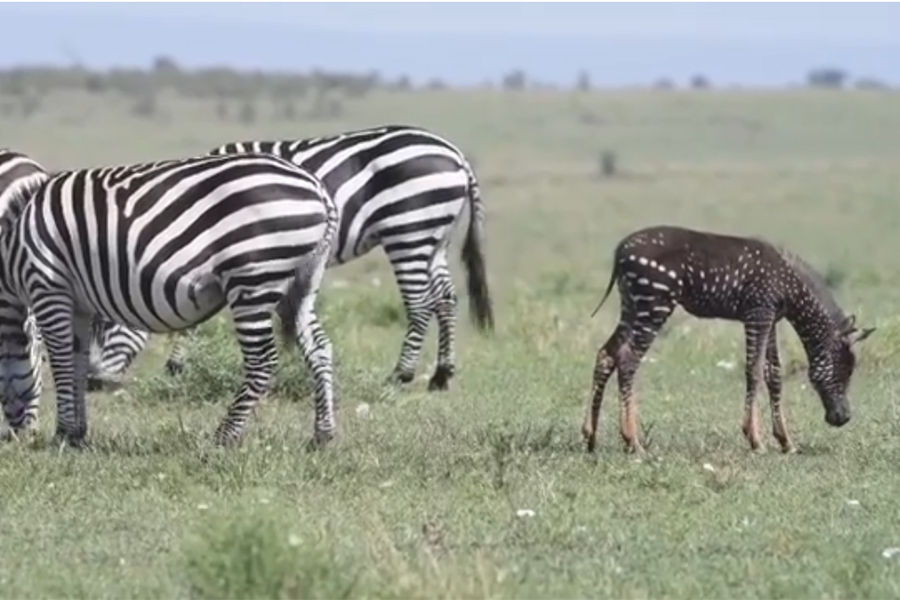
Both prefer to live in mountainous areas in Angola, Namibia, and South Africa. There are the Cape mountain zebra (Equus zebra zebra) and Hartmann’s mountain zebra (Equus zebra hartmannae). There are two subspecies of mountain zebra. These zebra are well-adapted to the semi-arid grasslands they live in and can go 5 days without drinking. The Grevy’s zebra can go 5 days without water. The males have territories which they protect from others, while females and their foals move freely between these territories. Unlike the plains and mountain zebras, the Grevy’s Zebra lives primarily alone in semi-arid grasslands. They have been seen forming defensive circles around injured members of their families, often biting and kicking approaching predators. The social species of zebra will protect their members from predators. Their primary tactics are biting and kicking, as you can see in this video: This is usually when defending themselves from prey, defending their young or when males are fighting over a female. This means that as they bend down to eat grass they can still watch for lions or other predators.

They also have eyes high up on the sides of their heads. They have long front teeth (incisors) which act like scissors to cut the grass at the root, while their large back teeth (molars) work to grind down the grass. They are well adapted for grazing and staying alert for predators.

One group of plains zebra was recorded migrating 500km from Namibia to Botswana, which is actually the longest land migration of any African mammal. Plains zebra have the longest recorded migration of any African mammal. This migration is around 300 miles and the moving herds contain up to 30,000 zebra. They move from north to south to reach the rainy season in the Makgadikgadi Salt Pans, before returning back to reach the northern deltas again as the rainy season there returns. Plains Zebra mass migrate in Botswana twice a year. Other herd animals join in too, such as wildebeest and antelope.Ħ. Often as herds are migrating, they form ‘super herds’ with thousands of zebras. Multiple family groups come together to form herds. Plains zebra are known for their long migrations, moving to different areas in search of water and grass. Plains Zebra migrate and form super herds. However, the Grevy’s Zebra lives primarily alone, or in loose herds. These groups usually integrate into larger herds. The plains and mountain zebras stay in family groups, with a dominate male, females and their foals (baby zebras). Different zebra species have different social structures. They are in fact black with white stripes! 3 4. The age-old question of whether or not zebras are white with black stripes or black with white stripes has finally been answered with science. It’s likely to be a combination of all these things! 2 3. Some theories suggest that the stripes work to keep them cooler, while others show that biting flies don’t like to land on stripes. There have been lots of theories, including that the stripes help confuse predators. No one is completely sure why they have stripes. Scientists have even developed a way to read their stripes like bar codes to be able to identify specific zebras in a heard! 1Ģ. Zebras are iconic for their stripes, which are actually unique to each individual, like a human’s fingerprint. They are the favourite prey of lions but are also hunted by leopards, cheetahs, spotted hyenas, brown hyenas, and Nile crocodiles.Īccording to the IUCN only the Grevy’s Zebra is endangered, while the mountain zebra is vulnerable, and the plains zebra is near threatened. They are well evolved for this with strong front teeth to pull up the grass and large molars in the back of their mouths for grinding. They are grazers, feeding mainly on grasses.

Favoured habitats include grasslands, woodlands, savannahs, and mountainous areas. Zebras are native to the continent of Africa, specifically eastern and southern parts such as Kenya and Botswana. Grevy’s Zebra: endangered, mountain zebra: vulnerable, plains zebra: near-threatened.

Lions, cheetahs, leopards, spotted hyenas, brown hyenas and Nile crocodiles. Grevy’s zebra: 350-450kg, the Plain zebra: ~400kg, and the mountain zebra: ~280kg. Grasslands, woodlands, savannahs, and mountainous areas. There are three living species of Zebra: the Grevy’s zebra (Equus grevyi), the plains zebra (Equus quagga), and the mountain zebra (Equus zebra). They are members of the group Equus, which contains horses and asses. Zebras (subgenus Hippotigris) are well-known for their distinctive stripes.


 0 kommentar(er)
0 kommentar(er)
